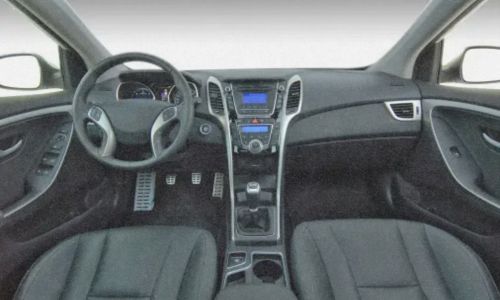Introduction of Rear Window Technology In the ever-evolving landscape of automotive technology, rear window technology has emerged as a focal point for enhancing safety, convenience, and overall driving experience. As vehicles become more integrated with advanced features, rear window innovation is crucial in providing drivers with a comprehensive view of their surroundings. This article explores the latest trends and advancements in rear window technology, shedding light on how these innovations shape the future of driving. Evolution of Rear Window Technology The evolution of rear window technology has been remarkable, taking the once simple and static piece of glass to new heights. The introduction of electrically heated rear windows in the mid-20th century marked the initial foray into incorporating technology into this fundamental component of vehicles. However, recent advancements have propelled rear window technology far beyond its original defogging capabilities. Traditionally, rear windows served as straightforward, transparent panels, allowing drivers to view the road behind them. The latest innovations, however, have elevated these surfaces into smart interfaces. Rear window technology now includes smart glass features that enable seamless transitions between transparent and opaque states, offering privacy and reducing glare. In some advanced systems, drivers can customize transparency levels, gaining control over the amount of light entering the vehicle. Furthermore, these smart surfaces have evolved to display more than just a clear view. They now showcase information such as navigation prompts, weather updates, and even augmented reality elements. This integration of rear window technology not only adds to the visual appeal of vehicles but also plays a pivotal role in enhancing safety and providing drivers with a more informed and enjoyable driving experience. Augmented Reality Displays Augmented reality (AR) has become a buzzword across various industries, and the automotive sector is no exception. Rear window technology increasingly incorporates AR displays to provide drivers with crucial information without diverting their attention from the road. For instance, navigation directions, speed limits, and collision warnings can be projected onto the rear window, creating an immersive and informative driving experience. Moreover, AR displays can enhance the vehicle’s overall safety by overlaying information about potential obstacles or pedestrians in the driver’s line of sight. This integration of AR technology into rear windows aligns with the industry’s broader goal of reducing distractions and improving overall road safety. Smart Tinting and Dimming Smart tinting and dimming technologies are making waves in the automotive industry, allowing drivers to adjust the transparency of their rear windows at the touch of a button. Electrochromic glass, a key player in this innovation, will enable users to control the opacity of the rear window, providing privacy when needed and increasing visibility in low-light conditions. This feature adds a touch of luxury to the driving experience and contributes to energy efficiency by reducing the need for sunshades or curtains. Rear Window Technology: Advanced Camera Systems Traditional rearview mirrors are being replaced by high-tech camera systems that offer a panoramic view of the vehicle’s surroundings. These systems, often integrated into the rear window, use multiple cameras to create a composite image displayed on an in-car screen. This technology eliminates blind spots, enhances parking maneuvers, and improves road safety. Moreover, some systems include features like object detection and cross-traffic alerts, further minimizing the risk of collisions. Augmented Reality Side Mirrors Taking innovation a step further, augmented reality side mirrors are integrated with rear window technology to provide drivers with a comprehensive view of their surroundings. These digital mirrors use cameras and sensors to capture real-time footage, augmented with additional information such as traffic conditions, weather updates, and navigation cues. This improves safety and adds a futuristic element to the driving experience. Heads-Up Displays (HUDs) Heads-up displays have been around for some time, primarily on windshields, but recent advancements have extended this technology to rear windows. These displays project essential information directly onto the rear window, ensuring drivers can access critical details without taking their eyes off the road. This can include speed, navigation instructions, and warnings, contributing to a more focused and safer driving experience. The Car Window Market size is projected to reach a Multimillion USD by 2029, Compared to 2022, at an unexpected CAGR during 2022-2029. Implementing HUDs on rear windows is particularly beneficial when the driver needs to quickly assess information without glancing down at traditional instrument clusters. As technology evolves, we can expect even more sophisticated HUDs that provide a seamless and integrated view of vital information across the vehicle. Hydrophobic Coatings and Self-Cleaning Glass Maintaining a clear view through the rear window is essential for safe driving. Hydrophobic coatings and self-cleaning glass technologies address this challenge by repelling water, dirt, and debris. These coatings create a thin, water-resistant layer on the glass surface, allowing raindrops to bead up and roll off effortlessly. As a result, drivers can enjoy an unobstructed view even in inclement weather conditions, enhancing both safety and convenience. Integration with Advanced Driver Assistance Systems (ADAS) Rear window technology is increasingly becoming integral to Advanced Driver Assistance Systems (ADAS). These systems leverage sensors, cameras, and radar technology to enhance vehicle safety by providing lane departure warnings, automatic emergency braking, and adaptive cruise control. The seamless integration of rear window technology with ADAS contributes to a holistic vehicle safety and automation approach. Solar-Generating Windows: Rear Window Technology As the automotive industry embraces sustainability, rear window technology focuses on safety, convenience, and energy efficiency. Solar-generating windows, equipped with photovoltaic cells, harness sunlight to generate electricity. This energy can power various vehicle systems, reducing reliance on traditional power sources and contributing to a greener driving experience. Connectivity and Communication Features Rear window technology enhances connectivity and communication within and outside the vehicle. Integrated communication systems allow drivers to send signals to other cars, pedestrians, or even traffic infrastructure. For example, a rear window display could convey messages like “yielding to pedestrians” or “changing lanes” to surrounding drivers, fostering a safer and more cooperative driving environment. Biometric Sensors for Driver Monitoring Ensuring driver safety is a top priority for automakers, and

